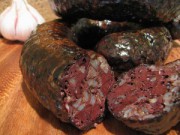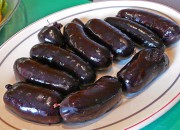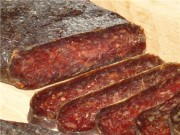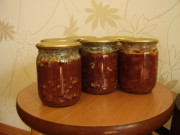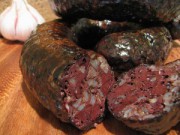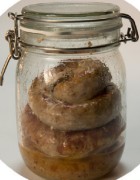The history of sausage or where and how sausage appeared in the world.
Sausage is a food product made from minced meat, minced meat, sometimes a whole piece of tenderloin with various additives, prepared in a special way and tightly packed in a natural or artificial casing. Since in any, even the most seedy store, there are always several dozen varieties of sausage to choose from, few modern housewives prepare it themselves. Meanwhile, making sausage at home is quite possible.
Sausages and similar products do not have a specific homeland; different peoples invented them completely independently of each other. Mentions of it are found in the most ancient written sources, both Chinese, Greek, and Babylonian. Surely, nonliterate peoples also prepared similar meat dishes. Meat spoils quickly, especially in hot climates. Therefore, sausage as a long-term storage product was absolutely indispensable both in military campaigns and in peacetime.

In Ancient Rome, sausage production reached industrial scale. It was part of the food supply of the Roman troops. It was prepared according to dozens of different recipes from meat, poultry and even fish and seafood. In the 5th century, the invasion of barbarians interrupted the history of the Roman Empire, but not the history of Roman sausage. Italian cuisine became the heir to ancient culinary traditions, which, in turn, influenced the gastronomic habits of the French.
Distinguish smoked, boiled-smoked or semi-smoked, boiled, dried and even blood sausages.For their preparation, poultry, pork and beef, lamb and horse meat are used.

Usually sausages include products made from minced meat, but there are also varieties made from a whole piece of meat. These are many varieties of sausages from the Caucasus, the countries of the Balkan Peninsula, Western and Central Asia. These include basturma, sujuk and kazy.
It is believed that the prototype of these dishes was horse meat prepared in a special way, an invention of the soldiers of Genghis Khan. To preserve the meat longer, it was placed under the saddle for some time. There it became saturated with salty horse sweat and lost excess moisture under the weight of the rider.
To this day, sujuk and kazy continue to be prepared from horse meat. Kazy is especially valued. This type of sausage is always present on the festive table of all Turkic peoples. It is prepared from a whole tenderloin, which is tucked into a washed horse intestine. Then the kazy is boiled, dried or smoked.

Sujuk is made from other, less valued parts of the carcass, so it costs less.
And here basturma in modern cuisine it is made from beef tenderloin. To do this, it is salted and placed under a press to get rid of excess moisture and give the meat the desired shape. After this, the basturma is rolled in a mixture of spices and hung out to dry.
In medieval Europe, sausage was the food of aristocrats. For its production, excellent quality meat was used, as well as overseas spices, which in those days were very expensive and were not available to everyone. Sausage was prepared in different ways, depending on local culinary traditions and natural conditions. So, in the southern countries, sausages were dried in the sun, and in the northern countries they were smoked.
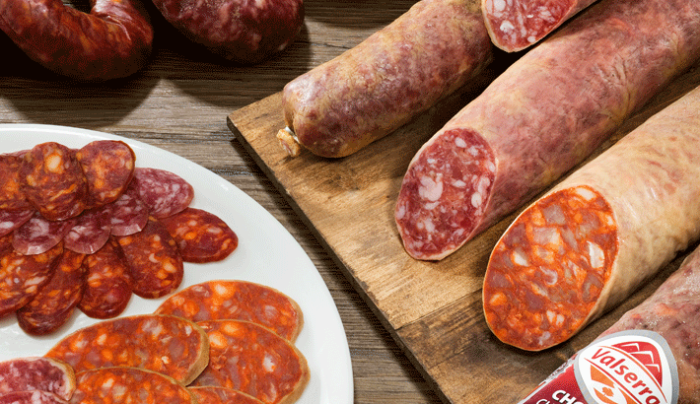
Each country had its own favorite recipes, its own little cooking secrets. For example, in Lithuania they prepared smoked sausage from game. It was served fried on holidays, and it was fried immediately before consumption, poured with strong alcoholic drinks and set on fire.
The Finns baked sausage on hot stones in the sauna.
Classic Italian salami was prepared using a complex combination of ingredients, including not only the usual veal and pork, but also donkey, venison and turkey. In addition, the composition included a variety of herbs, wine, vinegar, garlic and white pepper. After shaping, the sausage was dried in the sun. Over time, it became covered with a layer of mold, which protected the product from damage by putrefactive bacteria, and could be stored for several years.

The French, always famous for their exquisite cuisine, also invented several original sausage recipes. For example, a recipe for white veal sausage with cognac, various sausages with apples, rabbit sausage with herbs. Also widely known is French andouillet, a type of sausage stuffed with tripe thinly sliced into strips.
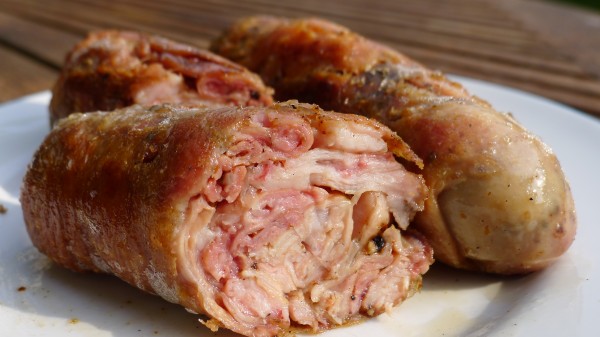
But the Germans and Austrians were most famous for their sausage products in Europe. They traditionally preferred pork and beef and rarely used exotic meats. But, thanks to various methods of culinary processing, they gave the world more varieties of fried, boiled and smoked sausages than any other people. It’s not for nothing that the Germans were called sausage makers. It was in Germany that the man who invented sausages, Johan Georg Laner, was born and learned his craft. True, he began making them after moving to Vienna.Therefore, Austria and Germany are still arguing about sausage championship.

The Slavs also prepared sausages. It is usually believed that Russian sausages are a later borrowing from German cuisine, another European novelty introduced into Russian life by Peter I. But in reality, the history of sausages in Rus' has much more ancient roots. Mentions of it are already found in Novgorod birch bark documents of the 12th century.
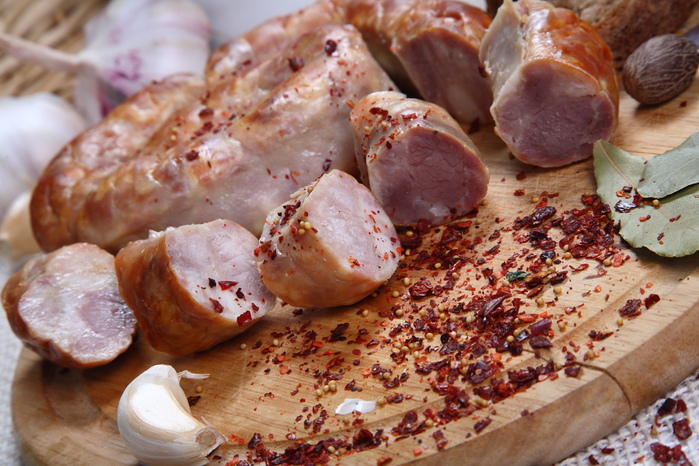
Classical homemade sausage The Slavs prepared it from pork or beef, cut into large pieces, mixed with chopped lard, garlic and pepper. All this was stuffed into the washed small intestine (guts) and baked in the oven. Perishable meat products were even more important to the Slavs than to other peoples due to the strict church calendar. Periods of breaking the fast alternated with long fasts, and throughout this time the meat had to be preserved somehow.
Nowadays we have access to many varieties of factory-produced sausages, but this should not stop us from experimenting at home. Why not cook some delicious sausage yourself, from natural high-quality products and according to the recipe you want? Fortunately, now we have the opportunity to be inspired by the culinary heritage of all peoples of the world. Among all this variety, there is sure to be something that suits your taste.
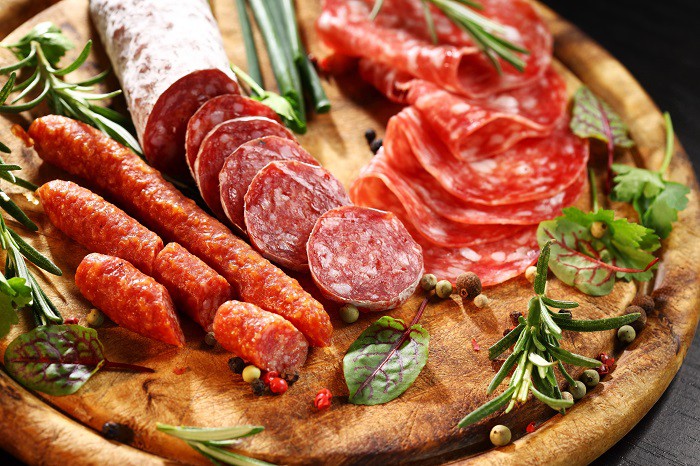
If you want to know what the history of sausage is in Russia, watch the video from ProVkus.


